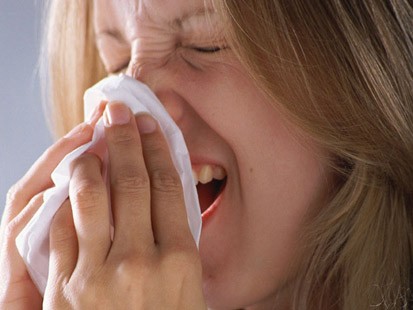Migraine Headaches
Are you one of the 28 million Americans suffering with this?
Are you one of the 28 million Americans who is tired of suffering from recurring migraine headaches?
 Do you worry about long term medication side effects, or find that medication is less than efficacious, then perhaps it’s time to give chiropractic a try. A study published in Headache magazine in January 2003 of patients with recurring migraines found that 2 out of 3 delayed or avoided taking prescribed drugs due to concerns about treatment side effects. The most commonly prescribed drugs are triptans, which work by affecting the serotonin levels to constrict the blood vessels and block some of the pain pathways in the brain. Anyone at risk for cardiovascular or liver disease should not take this class of medication. Some patients are allergic and can develop itching, muscle twitching, high fever, vomiting and difficulty breathing. If the triptans are combined with certain anti-depressants, the risk of seizure is greatly increased.
Do you worry about long term medication side effects, or find that medication is less than efficacious, then perhaps it’s time to give chiropractic a try. A study published in Headache magazine in January 2003 of patients with recurring migraines found that 2 out of 3 delayed or avoided taking prescribed drugs due to concerns about treatment side effects. The most commonly prescribed drugs are triptans, which work by affecting the serotonin levels to constrict the blood vessels and block some of the pain pathways in the brain. Anyone at risk for cardiovascular or liver disease should not take this class of medication. Some patients are allergic and can develop itching, muscle twitching, high fever, vomiting and difficulty breathing. If the triptans are combined with certain anti-depressants, the risk of seizure is greatly increased.
Some of the side effects of the triptans and other prescription migraine medications included fatigue, nausea, dizziness, muscle weakness, chest pressure, sleepiness, impaired concentration and racing heartbeat. At the very best, the medications are only effective about 50% of the time, and it’s quite difficult to regulate to the proper dosage.
Many patients experience very positive results with chiropractic treatment and are happy to be off their medications and not having to worry about serious reactions or interactions with other medications. In a study published in the Journal or Manipulative and Physiological Therapeutics in February 2000, 127 migraine patients who experienced at least 1 migraine headache per month were divided into 2 groups. Group no. 1 received specific chiropractic adjustments, while group no. 2 (the control group) received fake electrical stimulation (no current delivered). After 2 months of treatment, the chiropractic group experienced significant improvement in the frequency, duration and amount of disability of their migraines, as well as decreased need for medication. In fact, 20% of the chiropractic patients reported a 90% reduction in frequency, and 50% reported substantial improvement in severity.
Cold and Flu
Did you know that the most common disease known to mankind actually responds BEST to the least expensive treatment?
Cold
Colds are caused by viruses, most commonly the rhinoviruses, and result in over one billion episodes a year in the U.S. Children tend to have 6 to 10 colds per year, while adults average 2 to 4 colds per year. Women, aged 20 to 30, tend to have more colds than men. On average people over 60 have fewer than 1 cold per year.
Cold season is typically fall and winter. It is thought that this coincides with kids returning to school and people staying closed in, in the winter. The coldness may also make the nasal passages dryer and more susceptible to viral infection.
Studies suggest a person is most likely to transmit rhinoviruses in the second to fourth day of infection, when the amount of virus in nasal secretions is highest. Researchers also have shown that using aspirin to treat colds increases the amount of virus shed in nasal secretions, possibly making the cold sufferer more of a hazard to others.
Flu
Influenza, or the flu, is a respiratory infection caused by a variety of flu viruses. The U.S. Centers for Disease Control and Prevention (CDC) estimates that 35 to 50 million Americans come down with the flu during each flu season, which typically lasts from November to March. Children are 2 – 3 times more likely than adults to get sick with the flu, and they frequently spread the virus to others. Although most people recover from the illness, the CDC estimates that in the flu results in more than 100,000 hospitalizations per year in the U.S., with approximately 36,000 people succumbing to fatal complications.
 Treatment
Treatment
This is one area where allopathic (medical) health care and chiropractic health care used to be miles apart, but the allopathic doctors now give the same advice that chiropractors have given their patients for decades. MD’s used to give their patients antibiotics for the cold or flu, which they eventually found did NOT work. The reason being, antibiotics are for bacterial infections, and cold and flu come from viral infections. The end result was that not only didn’t they treat the cold or flu, but in many cases the bad bacteria coincidentally present were often times not completely killed off. This meant that the viral bacteria survived to become “super germs” such as MSRA which are highly resistant to antibiotic treatment.
Antibiotics are wonderful drugs which have been GROSSLY over used and abused by our society in general. The way it is used in our meat products is a whole other discussion. At this point MD’s who prescribe antibiotics for uncomplicated colds or flu’s are considered to be incompetent! Some MD’s still say they prescribe them to prevent secondary bacterial infections. This too, has been proven to be a myth. People only very rarely get secondary bacterial infections after having a cold or flu.
To properly treat your cold or flu you should realize that all of the germs which love to live in our bodies love to live in environments which are precisely 98.6 degrees. That is why your body naturally raises your body temperature. DO NOT get in the way of this natural process by taking aspirin, Tylenol, or cold remedies which lower your body temperature. In fact you can help those natural processes by raising your body temperature. I recommend that you keep it as close to 102 degrees as possible without going over 102 degrees. You will be uncomfortable but you will get over the illness much faster. You should also your body well hydrated with water, watered down fruit juices (1/3 juice, 2/3 water), broth especially chicken soup (“Jewish Penicillin”). Temporarily increase your intake of the B vitamin complex, this will help improve your overall energy. You should also temporarily increase your vitamin C. You can take 5 grams a day or more for up to a week. Do not drink ANY sugary drinks or sodas. These only serve to decrease your natural immunities.
| Symptoms | Cold | Flu |
| Fever | Rare | Characteristic, high (100-102°F); lasts three to four days |
| Headache | Rare | Prominent |
| General Aches, Pains | Slight | Usual; often severe |
| Fatigue, Weakness | Quite mild | Can last up to two to three weeks |
| Extreme Exhaustion | Never | Early and prominent |
| Stuffy Nose | Common | Sometimes |
| Sneezing | Usual | Sometimes |
| Sore Throat | Common | Sometimes |
| Chest Discomfort, | Cough Mild to moderate; hacking cough | Common; can become severe |
| Complications | Sinus congestion or earache | Bronchitis, pneumonia; can be life-threatening |
http://www.weather.com/activities/health/coldandflu/cfcoldfacts.html
http://www.weather.com/activities/health/coldandflu/cfflufacts.html
http://www.webmd.com/cold-and-flu/is-it-a-cold-or-flu
Cold and Flu
Did you know that the most common disease known to mankind actually responds BEST to the least expensive treatment?
Colds
Colds are caused by viruses, most commonly the rhinoviruses, and result in over one billion episodes a year in the U.S. Children tend to have 6 to 10 colds per year, while adults average 2 to 4 colds per year. Women, aged 20 to 30, tend to have more colds than men. On average people over 60 have fewer than 1 cold per year.
Cold season is typically fall and winter. It is thought that this coincides with kids returning to school and people staying closed in, in the winter. The coldness may also make the nasal passages dryer and more susceptible to viral infection.
Studies suggest a person is most likely to transmit rhinoviruses in the second to fourth day of infection, when the amount of virus in nasal secretions is highest. Researchers also have shown that using aspirin to treat colds increases the amount of virus shed in nasal secretions, possibly making the cold sufferer more of a hazard to others.
Flu
Influenza, or the flu, is a respiratory infection caused by a variety of flu viruses. The U.S. Centers for Disease Control and Prevention (CDC) estimates that 35 to 50 million Americans come down with the flu during each flu season, which typically lasts from November to March. Children are 2 – 3 times more likely than adults to get sick with the flu, and they frequently spread the virus to others. Although most people recover from the illness, the CDC estimates that in the flu results in more than 100,000 hospitalizations per year in the U.S., with approximately 36,000 people succumbing to fatal complications.
Treatment
This is one area where allopathic (medical) health care and chiropractic health care used to be miles apart, but the allopathic doctors now give the same advice that chiropractors have given their patients for decades. MD’s used to give their patients antibiotics for the cold or flu, which they eventually found did NOT work. The reason being, antibiotics are for bacterial infections, and cold and flu come from viral infections. The end result was that not only didn’t they treat the cold or flu, but in many cases the bad bacteria coincidentally present were often times not completely killed off. This meant that the viral bacteria survived to become “super germs” such as MSRA which are highly resistant to antibiotic treatment.
Antibiotics are wonderful drugs which have been GROSSLY over used and abused by our society in general. The way it is used in our meat products is a whole other discussion. At this point MD’s who prescribe antibiotics for uncomplicated colds or flu’s are considered to be incompetent! Some MD’s still say they prescribe them to prevent secondary bacterial infections. This too, has been proven to be a myth. People only very rarely get secondary bacterial infections after having a cold or flu.
To properly treat your cold or flu you should realize that all of the germs which love to live in our bodies love to live in environments which are precisely 98.6 degrees. That is why your body naturally raises your body temperature. DO NOT get in the way of this natural process by taking aspirin, Tylenol, or cold remedies which lower your body temperature. In fact you can help those natural processes by raising your body temperature. I recommend that you keep it as close to 102 degrees as possible without going over 102 degrees. You will be uncomfortable but you will get over the illness much faster. You should also your body well hydrated with water, watered down fruit juices (1/3 juice, 2/3 water), broth especially chicken soup (“Jewish Penicillin”). Temporarily increase your intake of the B vitamin complex, this will help improve your overall energy. You should also temporarily increase your vitamin C. You can take 5 grams a day or more for up to a week. Do not drink ANY sugary drinks or sodas. These only serve to decrease your natural immunities.
|
http://www.weather.com/activities/health/coldandflu/cfcoldfacts.html
http://www.weather.com/activities/health/coldandflu/cfflufacts.html
http://www.webmd.com/cold-and-flu/is-it-a-cold-or-flu

